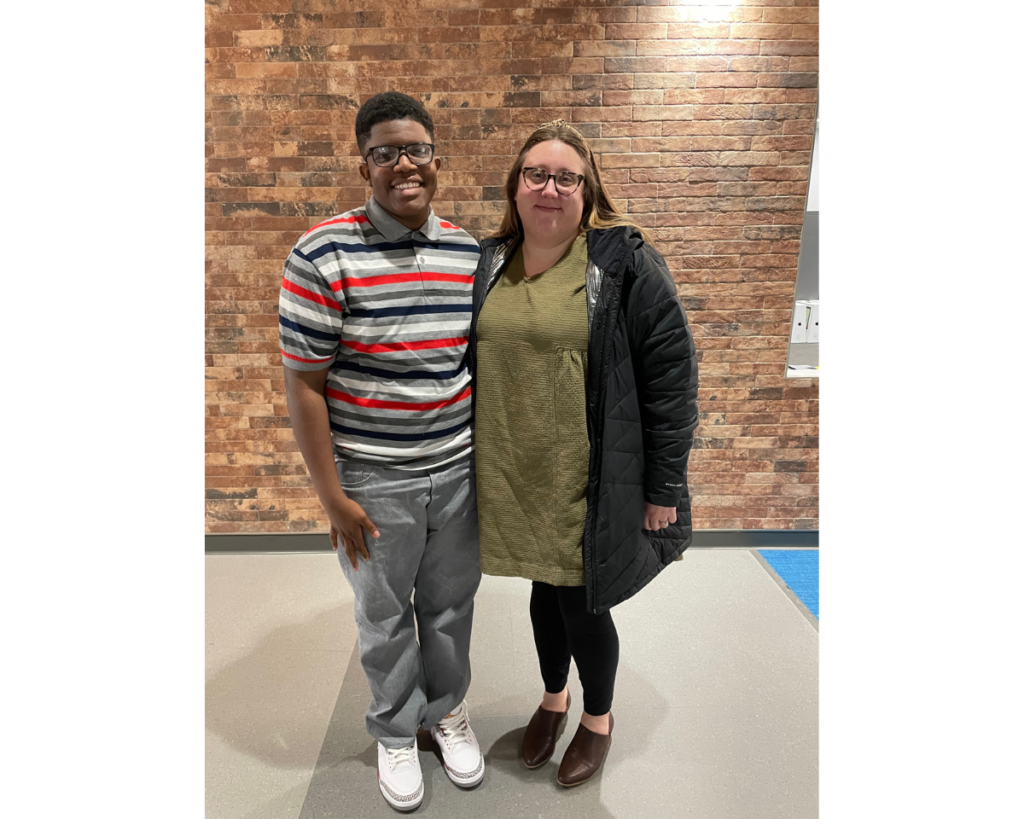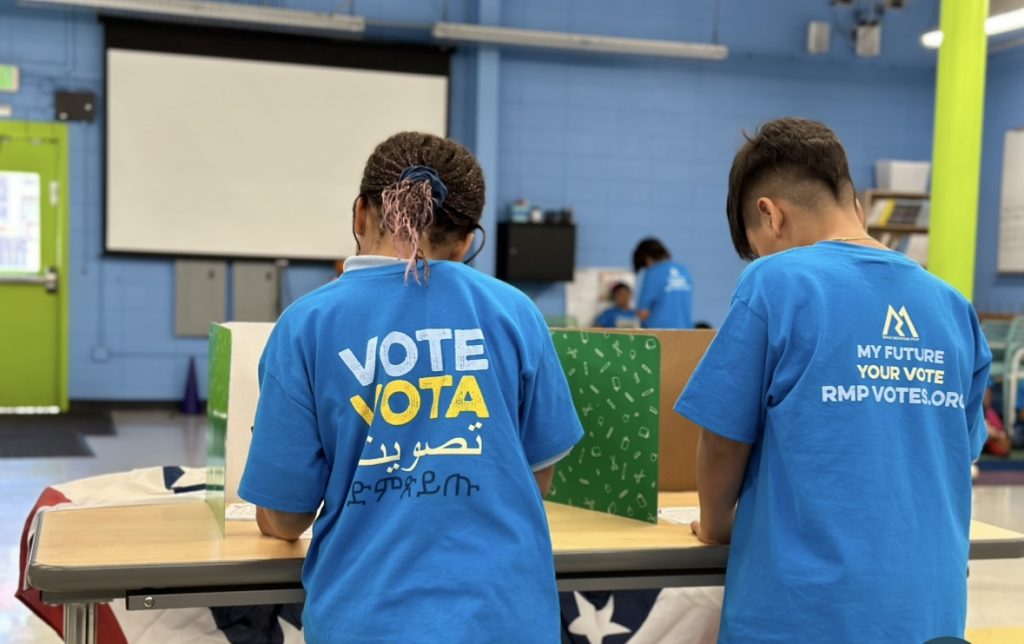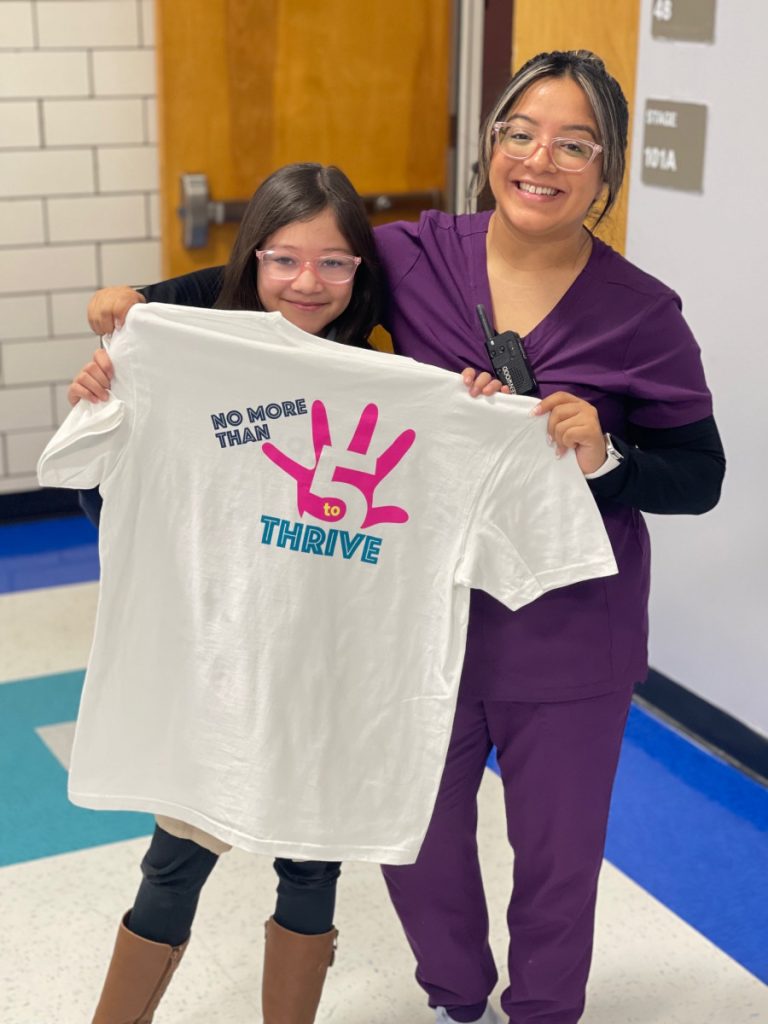Every day of our lives almost all of us will spend time reading. It could be a work of fact or fiction, a magazine or newspaper, or something online.
Through the written word we gain new knowledge. We combine these 26 symbols based upon the sounds they represent, or where they appear in a sequence and instantaneously recognize a word. As a species, it’s one of our most amazing skills.
Through reading, we quietly entertain or inform ourselves; are magically transported to other times—past, present and future; meet both real and imagined characters who exist in their own universe and are memorialized on the pages of books. Indeed, reading is the fuel that propels wonder.
What can be gained through reading is what literacy interventionists like Kelly Francisco and Samantha Hakes work on daily to impart to dozens of young minds at DSST: Green Valley Ranch Middle School and Aurora Science and Tech Middle School, respectively.
The pair patiently apply their knowledge and training in teaching this life skill to kids who have fallen behind in reading proficiency with the goal of bringing them up to a comprehension level that matches their grade.
The overriding cause of a widespread decline in reading proficiency among young readers, educators say, can be traced to what the nation and world just endured. Covid-19, the virus that killed more than a million Americans and 15 million worldwide, created a confluence of variables that impacted the world in ways few had anticipated.
The decline in literacy, perhaps, should have been anticipated especially with the daily challenges facing low-income and immigrant students.
A pattern many schools face each year is the significant number of students who move several times during a school year. This stop-start routine compromises even basic education.

There were also parents who, during the pandemic, could not supervise their children because they needed to work or, in other cases, caregivers who couldn’t supervise children adequately because of age or health.
For immigrant students, especially newly arrived, many families often returned to their native countries to deal with family issues, some for prolonged periods of time. When they did return, children already challenged with learning a new language, faced even more daunting classroom issues, not the least of which was basic literacy.
“They were in the fourth grade when (school) was shut down,” Francisco said from her classroom. These days, her time is focused on shoring up students who have fallen behind—some significantly—in literacy.
Today, she’s working with a group of 10 students on a literacy drill that, on the surface, may seem remarkably simple, but clearly isn’t to everyone.
“The students in this group are working on inflecting endings of words. Those were irregular,” that is words ending in ‘ed’ or ‘ing.’ The drill, she said is “where they were expected to pick up on a pattern, learning through practice.”
Francisco explains that the English language has twists and turns that are not always obvious, especially to a young mind struggling to stay afloat with grade-level literacy. “This is their first shot at the irregular (verb),” she said. “What happens when they don’t follow the pattern that we know? We can’t apply a single rule to everything.”
The plunge in reading scores was documented in data from the National Assessment of Education Progress, known as “the nation’s report card.” Colorado, like the rest of the country, suffered a serious decline in this critical subject area.
“The results show the profound toll on student learning during the pandemic,” said Peggy G. Carr, head of the National Center for Education Statistics. The drop in literacy proficiency in Colorado was two full points, contrasted with a national decline of three.
Secretary of Education Miguel Cardona characterized Covid’s impact on reading “appalling and unacceptable.” The virus, he said, “upended our country in so many ways and our students cannot be the ones who sacrifice most.”
Hakes, a former Denver Public School eighth grade teacher, said the job of getting students back or near the level where they should be with literacy is not going to be easy. “I was teaching during the pandemic,” she said. When schools were ordered to shut down, “I assumed there would be an impact, but not to this depth.”
Efforts to throw students ‘life jackets’ in the form of computers and hotspots, tools allowing them to access the internet from home, were laudable but not always successful. There is no substitute for in-person learning.
“I like to imagine myself as an elementary student,” Hakes said. “It’s our job to engage all students learning what they need. But when you put all these barriers — technology, family support due to unique circumstances– -trying to imagine a student learning how to read, it’s all very complicated.”
The efforts being made to halt the decline in literacy are not simply to make it easier to move to the next grade. A recent survey released by Literacy Mid-South, said that 85 percent of all juveniles who interface with the court system are functionally low-literate. While low literacy is not an absolute determinant of a likelihood of future legal troubles, “correctional and judicial professionals have long recognized a connection between poor literacy…and crime.”
While to a layperson reading may not seem like a science, it is and requires its own formulations.
“In kindergarten,” said Hakes, “you’re learning letters and sounds. When we go into first grade, we’re now learning the combination of letters, what we call high-frequency words, the words we see consistently.” Ideally, she said, “by the end of first grade you’re reading books with predictable patterns.”
Elevating literacy levels is a gradual process, said Hakes. Using ‘word families,’ words that end with familiar letters like ‘a’ and ‘m,’ are useful in recognizing a string of words with this pattern. “Pam” is an example she cited, but also many others with the same letter combination.
Moving students in the right direction, said Francisco, is the goal, “to have an advanced understanding of phonics.” Phonics is teaching to read by associating the sounds of letters or groups of letters. It’s akin to putting together an alphabetical jigsaw. “Phonics helps with decoding skills and helps with writing and pronunciation,” she said.
The changes in word patterns, said Francisco, “can be very subtle.” Teaching students to recognize words that may seem easily understood and recognizable to most overlooks the reality of someone struggling to acquire this skill.
Good reading instruction, she said, “helps them sounding out those words, noticing them and knowing right away, ‘Oh, that’s ‘spoke’ and not ‘spuk.’
The lessons Francisco and Hakes repeat each day with their students go well beyond the repetition of teaching word families, irregular endings and the various nuance of language. Both take the time to inspire and motivate their students, stress the importance of literacy and the place it will occupy in their lives’ trajectory.
“I have shared the research behind literacy and opportunity,” said Francisco. “It ranges from college opportunity to everyday things,” like buying a home, social justice, and self-advocacy. Literacy, said the Spokane, Washington, native and Gonzaga University alum, is key to getting what you want and need, what she calls “owning your own voice.”
Hakes says her commitment to her students is reenforced by her own experiences. “I ground myself thinking about Frederick Douglas,” the former slave and abolitionist. “I read him with seventh graders a few years ago,” she said. “One of the main themes in his personal narrative is that reading is the key to freedom.”
Enslaved people, Hakes recalled from the Douglas story, were denied literacy. “It was withheld in order to maintain the power dynamic.”
Progress in moving toward more literary proficiency, both Hakes and Francisco agree, is incremental but headed in the right direction in their classroom. Unfortunately, the school year is only months away from ending, with summer vacation coming soon.
DSST normally leaves decisions about summer school to its individual campuses, but is reviewing that policy and will decide soon about the upcoming summer.
Without an intensive summer program, Hakes and Francisco worry, progress made over the last several months could slip, once more victim to many of the same issues that became normal in Covid’s darkest days.




